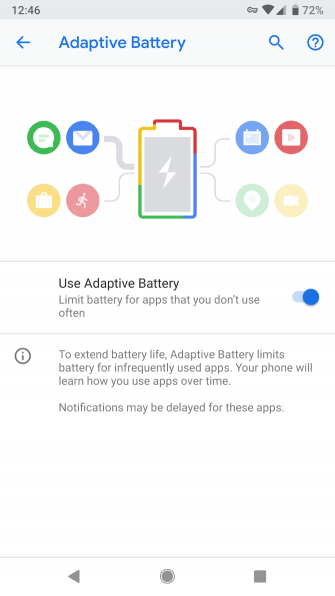1. Reboot Your Phone
The first step towards troubleshooting any issue you face is ensuring it’s not a temporary hiccup. To do that, you’ll need to reboot your phone. Doing so puts an end to all background processes or services which might impede an app’s ability to push notifications.
This will also refresh your phone’s core components, in case any of them crashed during a task.
2. Review the App’s Notification Settings
If restarting your phone didn’t do the job, try reviewing the notification settings for the app in question. The majority of mainstream apps offer their own set of proprietary preferences to modify how often they can push alerts, which type of notifications you want, and more.
Gmail, for instance, lets you completely switch off sync. So make sure you haven’t accidentally hit any buttons to shut off that feature while browsing the app’s settings.
If you don’t find the relevant settings in the app, make sure to check Android’s notification settings for the app under Settings > Apps & Notifications > [App name] > Notifications. Android Oreo and newer have a revised notification system that lets you change settings for different types of alerts
3. Disable Software Battery Optimizations
To preserve battery life and prevent apps you don’t use regularly from remaining active in the background, Android has begun to adopt AI-based software optimizations. But the algorithms powering these are not perfect yet and can wreak havoc when their predictions go south.
One of the most common victims of this is the notification system. If you’ve been facing troubles, disable these features for a few days.
On stock Android, you can disable Adaptive Battery under Settings > Battery to turn it off for all apps. But this is probably overkill. Instead, you can disable battery optimizations on a per-app basis by visiting Settings > Apps & Notifications > [App name] > Advanced > Battery > Battery optimization.
4. Check for Proprietary Power Savers
Some manufacturers go the extra mile by adding even more power-saving tools that automatically block apps they think are not important. So in addition to the ones Google bundles, you will have to check whether your phone comes with any other in-house optimizations.
On Xiaomi phones, for example, there’s a preloaded app called Security which houses several of these functions.
5. Check the Do Not Disturb Mode
Most Android phones ship with a handy Do Not Disturb mode. This is designed to suppress all notifications except for a handful you choose to let through. Software designers tend to put its switch in easily reachable places like the Quick Settings. Thus, if you’re not familiar with it, there’s a decent chance you could have mistakenly turned it on.
Head into Settings and under Sound or Notifications (depending on your specific Android device), review the Do Not Disturb mode. If you can’t find it in either of these places, search for Do Not Disturb from the bar present at the top of Settings.
6. Is Background Data Enabled?
In Android Oreo and later, you can cut off apps’ access to mobile data in the background. While you probably didn’t toggle this setting by accident, it’s still worth checking out when you have notifications problems. After all, no internet access renders many apps essentially dead.
You’ll find this option at at Settings > Apps & Notifications > [App name] > Data Usage > Background Data.









Post a Comment